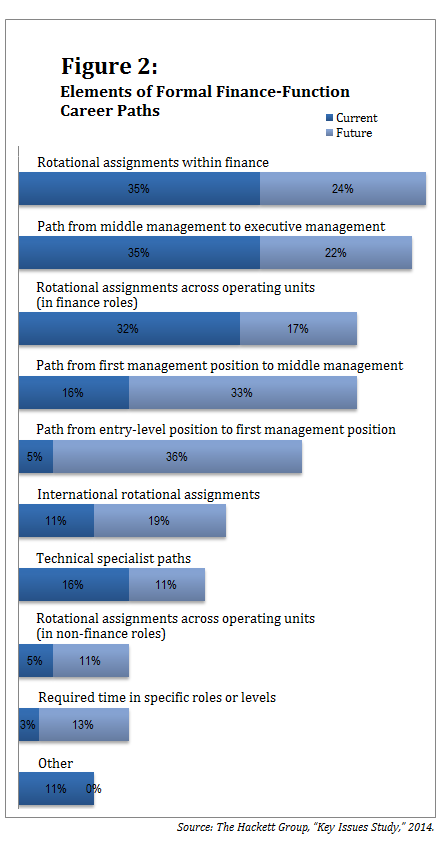 Talent is a hot topic in finance and treasury circles these days as executives fret about how to attract and retain the employees they need.
Talent is a hot topic in finance and treasury circles these days as executives fret about how to attract and retain the employees they need.
The buzz about talent reflects the changing set of skills that are required as finance and treasury seek to become more strategic, and as the economy's recovery leads finance teams to think about hiring, even as it may encourage employees to look for other opportunities.
Lynne Schneider, senior research director at the Hackett Group, a business and technology consulting company, noted that in recent years, finance budgets have been cut repeatedly or at best have remained flat. “Finance departments didn't have money for raises, they didn't have money for learning and development,” Schneider said.
With the economy picking up, finance departments are eager to add workers with the analytical, planning, and budgeting skills they're looking for, she said. But given the budget constraints of the last few years, they're worried about their ability to retain their current employees and attract new ones.
“We just hear so much from our clients about sourcing those rare skills, and fears around retention are big,” Schneider said.
Focus on Training and Retention
A recent Hackett survey shows that many finance departments are addressing those concerns by making changes in their talent management programs and putting more emphasis on training and development and retention.
 Forty-five percent of the companies Hackett surveyed plan to make changes this year in finance career paths and in training and development programs, while 42% plan changes in their strategic workforce planning.
Forty-five percent of the companies Hackett surveyed plan to make changes this year in finance career paths and in training and development programs, while 42% plan changes in their strategic workforce planning.
“The look at strategic workforce planning is new and different—making a plan that's not about six months from now, but one that looks more broadly at the workforce over a three- to five-year time period,” Schneider said.
The career paths that are seeing the most change are a little lower on the totem pole. Sixteen percent of surveyed companies offer a path from an individual's first finance management position to middle management, and another 33% plan to do so in the future. Just 5% offer a career path from entry-level finance positions to a first management position, but another 36% plan to do so.
“Some of the outsourcing or offshoring did get rid of some of the entry-level positions,” Schneider said. “It sets up more of a talent battle for those five- to 10-year experienced people.”
The topic of talent has become “a huge point of discussion” at treasurers meetings over the last year and a half, said Craig Martin, executive director of the Association for Financial Professionals' Corporate Treasurers Council (CTC). In fact, the council put out a guide entitled “Leadership in Treasury: Attracting and Retaining Talent” earlier this month.
Martin noted that treasury teams are small, and much of the necessary knowledge has to be acquired on the job. “As a treasurer, you need to know your basic finance, but when it comes to managing cash, global investments, treasury technologies, hedging—that stuff's not really taught in college.”
But once treasury groups find promising employees and train them, the small size of most treasury departments may make it hard to provide promotions and retain valued employees, he said.
According to the CTC report, career paths are a major challenge for finance departments, but also the best way for them to retain valued employees. An AFP survey shows 33% of treasury departments cited career paths as their biggest challenge in staff development, followed by cross training, which was cited by 16%.
The survey shows companies use a range of approaches to motivate finance employees, with 57% providing financial support for continuing education and certifications, 50% offering flexible work arrangements, and 45% providing employees with individual development plans.
Value of Rotation
Bruce Lynn, a managing partner at the Financial Executives Consulting Group, argued that a rotation program that moves executives between treasury and operating units not only helps retain employees, but provides them with valuable information about the company.
 “A successful treasury department is one in which people rotate in from the operating function of a company, stay in treasury for a while, and then rotate back out to another part of the company,” Lynn said.
“A successful treasury department is one in which people rotate in from the operating function of a company, stay in treasury for a while, and then rotate back out to another part of the company,” Lynn said.
Spending time in treasury teaches employees “where the cash comes from and where it goes,” Lynn added. “Operating cash flow is the lifeblood of a company. People who come out of an operating area understand that, and now they get a little more of a strategic view” of cash as a result of the time they spend in treasury.
Given that treasury departments are usually small, rotation programs also give companies a way to enhance the career of an employee who has nowhere to go within the treasury function, he said. “Some kind of rotation program is very valuable in retaining high-quality people.”
Lynn cites the hypothetical case of an assistant treasurer who hopes to advance but is working for a treasurer who's just 40 years old and not planning to go anywhere. “How do you retain someone like that?” Lynn said. “The only way I can think of is to say: 'We value you. Why don't you go off and run this part of the company, and then come back?' If you don't do that, the guy will have to leave. From a career standpoint, he's just blocked.”
The Hackett survey showed a fair number of companies already rotate finance employees and more plan to start rotation programs. Among the companies surveyed, 35% rotate employees within finance and 24% plan to do so in the future. Thirty-two percent of the companies rotate finance employees to finance assignments in operating units and 17% plan to do so in the future.
Talent Challenges Not Limited to Finance
In a survey of CFOs by Robert Half, a professional staffing firm, 16% said it is very challenging to fill professional-level positions in general, not just finance positions, while 47% said it is somewhat challenging to fill professional positions.
Brett Good, a senior district president at Robert Half, said the U.S. has a dual job market, with the unemployment rates for college-educated professionals running at about half the general unemployment rate.
But Good also cited the growing need for compliance staffers and for employees who can deal with such finance-related technologies as ERP systems. Those jobs are competing for the new college graduates who might traditionally have joined finance departments, he said.
And as the economy picks up, concerns about attracting skilled employees are only likely to grow. Good says Robert Half is seeing “broad-based demand across the board.” While hiring isn't at the levels seen in 1999 to 2000 or 2005 to 2006, “it's certainly a much improved environment than it has been in the last four or five years,” he said.
© Touchpoint Markets, All Rights Reserved. Request academic re-use from www.copyright.com. All other uses, submit a request to [email protected]. For more inforrmation visit Asset & Logo Licensing.



